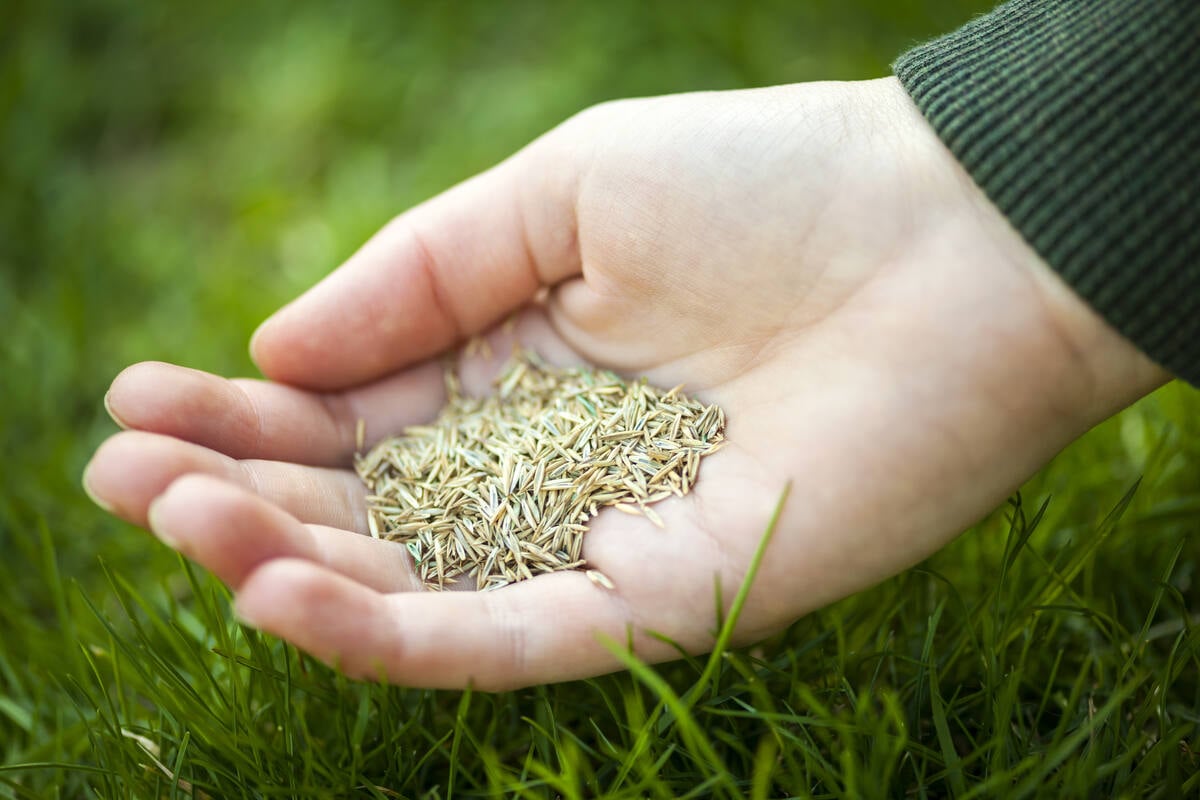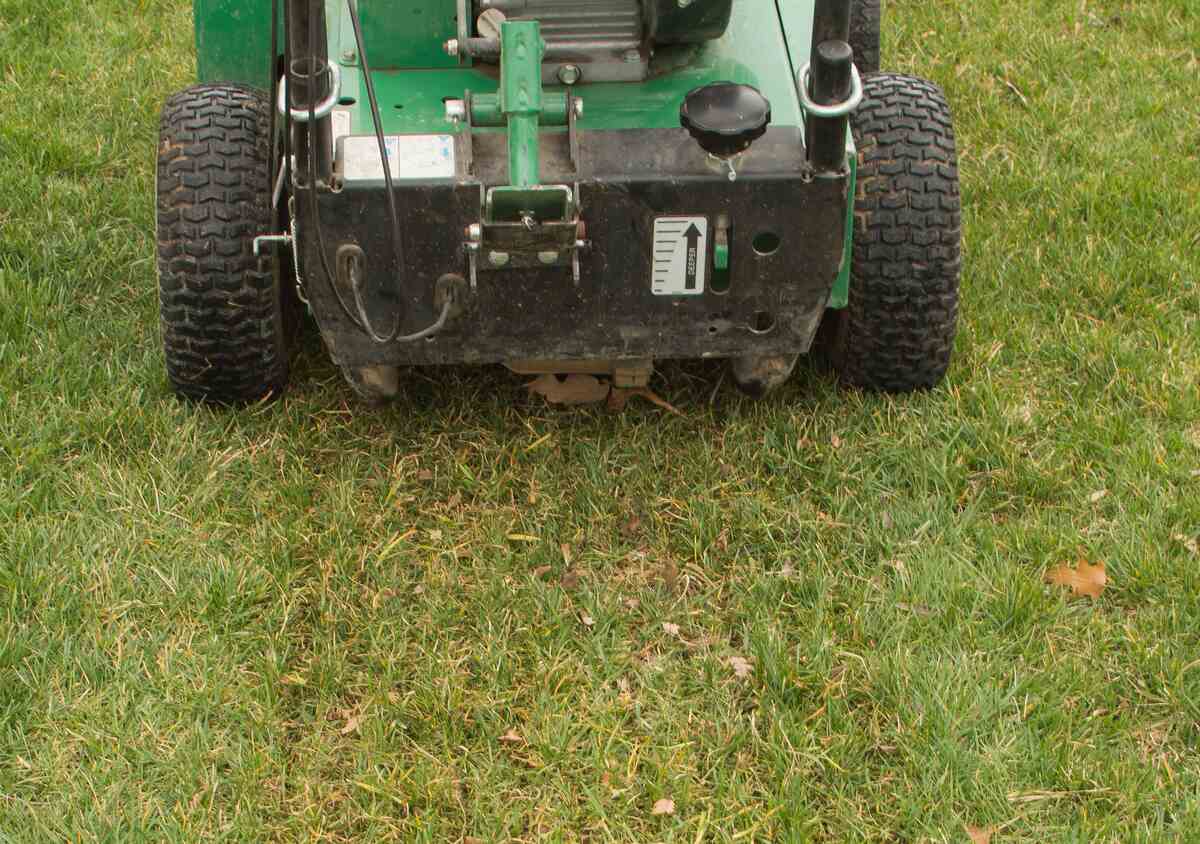
Have you ever wondered what power seeding is and how it can transform your patchy, lackluster lawn into a verdant oasis? Power seeding offers a solution that promises to address those unsightly bare patches by slicing the soil and planting new seeds without causing any harm to your existing lawn.
In this article, we’ll tell you everything you need to know about power seeding, including what it is, the pros and cons, and when to do it. We’ll share valuable tips on how you can take your lawn care to the next level, so let’s start!
What is Power Seeding?
Power seeding, also known as “slit seeding” or “slice seeding,” is a precise and efficient method to patch up your grassy areas by planting new seeds into the soil. This process uses a specialized machine equipped with rotating blades or disks that cut narrow rows or slices into the soil surface.
How does it work? These rows, typically spaced evenly, create a seedbed for the fresh grass seeds. The machine simultaneously deposits the seeds directly into these newly formed furrows, ensuring optimal seed-to-soil contact. This direct contact with the soil is the key advantage of power seeding, as it significantly enhances the germination rate of the seeds.
That makes power seeding an exceptional choice when you have bare patches or thin areas in your yard that aren’t healing themselves and need to be restored, whether it is due to stresses of extreme weather, pest infestations, or heavy foot traffic.
Power Seeding Pros and Cons
Here are some benefits of power seeding to help you get an overall view of the process:
Pros:
- Ideal for thinning lawns: Power seeding is particularly effective for areas of your lawn with sparse or no grass growth. It targets these trouble spots, promoting healthy, lush grass development where needed most.
- Rapid results: With power seeding, you can expect to see visible improvements in your lawn’s appearance relatively quickly. The seed-to-soil contact ensures faster germination and growth, so you’ll enjoy a more vibrant lawn in less time.
- Efficient seed utilization: Compared to other seeding methods, power seeding is a more efficient use of your grass seed. The placement of seeds into the soil reduces waste and increases the likelihood of successful germination.
- Natural weed suppression: As your newly planted grass grows and thickens, it naturally crowds out weeds, creating a healthier and weed-resistant lawn over time.
- Improved soil aeration: The slicing action of power seeding can also help to aerate the soil, which can enhance nutrient and water absorption, contributing to the overall health of your lawn.
And here are some disadvantages to consider:
Cons:
- Higher cost: Power seeding can be more expensive than traditional seeding methods. The equipment and professional services required may strain your lawn care budget.
- DIY challenges: Renting a power seeder can also be pricey, making it a less accessible DIY option for some homeowners. The complexity of the machine and the potential for errors may deter those with no experience.
- Potential for poor results: If the power seeding process is not executed correctly, especially in larger areas, your lawn may respond poorly. Over-slicing or uneven seed distribution can lead to less-than-desirable outcomes.
- Compacted soil limitations: Power seeding is less effective in heavily compacted soils. In such cases, the seeds may struggle to penetrate as deeply as intended. Soil preparation, aeration in particular, may be necessary to improve results in compacted areas.
- Timing: Timing is crucial when power seeding. It is typically done during fall for cool-season grasses and spring for warm-season grass. Poor timing or adverse weather conditions, such as heavy rain after seeding, can negatively impact the success of the process.
When to Power Seed
Fall stands out as the best season for power seeding if your lawn has cool-season grass, and for good reason. During these months, typically from late August through October, the weather conditions are ideal for successful grass seed germination and establishment.
As the summer heat recedes, the cooler weather creates an environment where grass seeds can germinate and grow without the stress of high temperatures. Additionally, the soil remains warm from the summer months, providing an ideal balance for root development.
Pro Tip: If your lawn features warm-season grass varieties, you can power seed in spring. Unlike cool-season grasses, warm-season grass seeds enjoy warmer temperatures, and when planted during this season, they can be established before winter.
Power Seeding vs. Aeration and Overseeding
When faced with the challenge of thinning grass or unsightly bare spots in your lawn, homeowners have multiple approaches available to address these issues. Two commonly used methods include overseeding and aeration, which are often combined for enhanced results. However, power seeding stands out as a powerful alternative, and here’s why:
| Method | Germination Rate (approximate) | Advantages |
| Overseeding | 15% | Simple, cost-effective |
| Aeration and Overseeding | 30% | Improves soil health, better seed-to-soil contact |
| Power Seeding | 90% | Highly effective, rapid results |
Overseeding
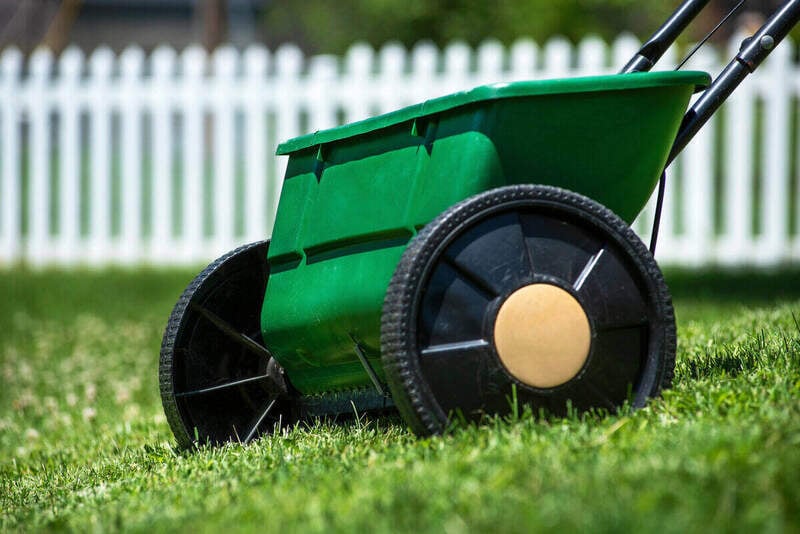
Overseeding is a method that involves spreading new grass seed over an existing lawn without disrupting the turf or the soil beneath it. While overseeding is a popular way to introduce new grass varieties and improve the density of your lawn, it yields a relatively low germination rate, typically around 15%.
This limited success is due to the seeds merely resting on the existing grass or soil, with minimal contact with the soil.
Aeration and Overseeding
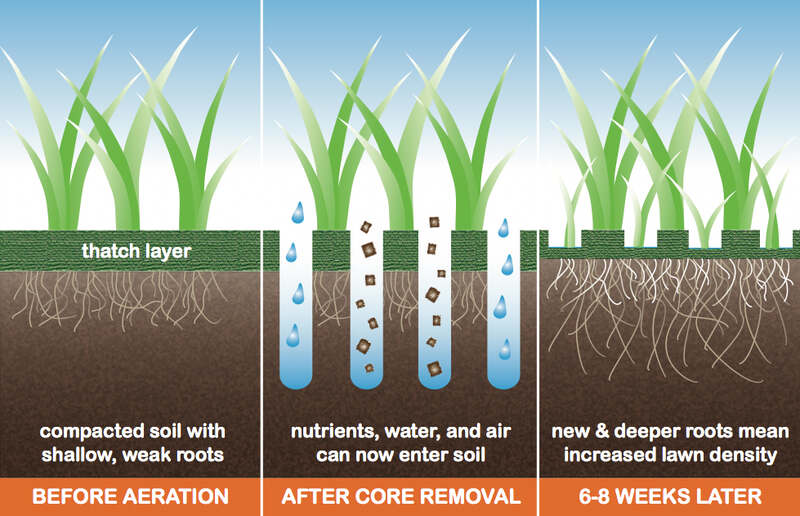
Aeration or core aeration consists of creating small holes or cores in the soil, allowing air, nutrients, and water to penetrate more effectively into the grass roots. Aeration is often combined with overseeding to overcome the limitations of overseeding alone.
By aerating before overseeding, you increase seed-to-soil contact, improving the germination rate to around 30%. This method helps create a healthier and more vibrant lawn by addressing soil compaction and improving overall soil health.
You can also combine aeration with dethatching, the process of removing the layer of dead and living grass (thatch) from your lawn, to increase overseeding’s effectiveness. Plus, dethatching has other benefits as well, such as improved fertilizer efficacy and better drainage.
Power Seeding
Power seeding employs specialized equipment to cut rows or slices into the soil and plant the grass seeds directly into these furrows. This process ensures that the seeds are in close contact with the soil, leading to an impressive germination rate of approximately 90%.
How to Power Seed Your Lawn
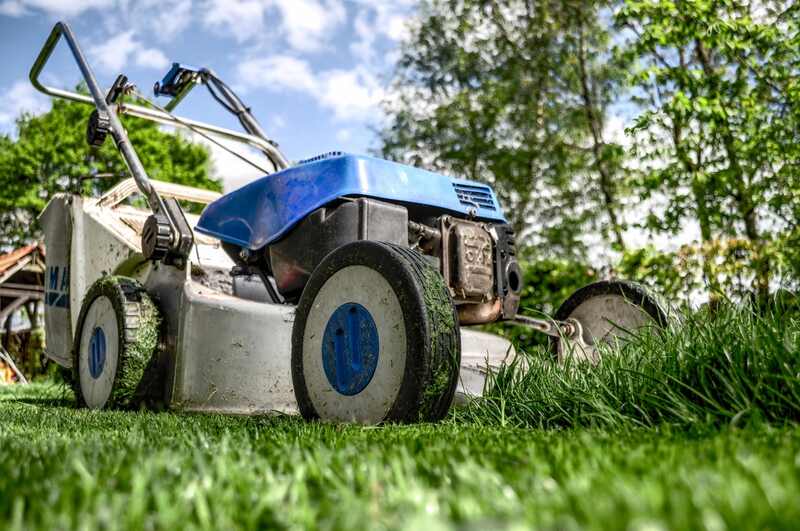
Power seeding, while not the simplest DIY project, is achievable if you’re comfortable operating lawn care machinery. By following these steps, you can successfully power seed your lawn and reap the rewards of a revitalized, lush turf:
- Step 1: Begin by mowing your lawn to a height of approximately 2 inches. Remove all grass clippings and debris to ensure a clean seedbed.
- Step 2: Visit your local rental store and rent a power seeder. Carefully read the equipment’s manual to familiarize yourself with its operation, maintenance, and safety instructions.
- Step 3: Choose a grass seed (or seed mixture) that suits your lawn’s specific needs and your regional climate.
- Step 4: Fill the hopper of the power seeder with the chosen grass seed. Follow the manufacturer’s recommendations for the appropriate seed rate based on the size of your yard and the grass variety you’re planting.
- Step 5: Adjust the settings on the power seeder according to your lawn’s requirements. Ensure that the seed drop rate and depth are set correctly to achieve optimal seed-to-soil contact.
- Step 6: Start at one corner of your lawn and begin to power seed in parallel rows, walking evenly and steadily. Overlap each pass slightly to avoid missed areas. For a second pass, walk perpendicular to the rows you already planted, and repeat the process.
- Step 7: After power seeding, water the newly seeded area daily for at least 10 days or until the grass seedlings have established themselves. It’s essential to keep the soil consistently moist during the germination period.
Here’s a video from “This Old House” to help you visualize it:
FAQ About Power Seeding
What is the Difference Between Hydroseeding and Power Seeding?
Power seeding and hydroseeding are two different but effective methods of lawn seeding. Hydroseeding is used to reseed — establish a new lawn — by spraying a mixture of seeds, water, and mulch. It’s ideal for quick and even coverage over large areas.
Power seeding, on the other hand, is mainly used to fix thinning lawns or bare spots on existing turf. It involves slicing the soil and planting seeds directly, resulting in excellent germination rates. It’s a targeted solution for existing lawns.
How Long Does Power Seeding Take to Work?
Under optimal conditions, the results of power seeding typically become visible within seven to 21 days as grass seedlings begin to emerge from the soil. That will depend on the type of grass seed used, the local climate, and the thoroughness of post-seeding care.
It may take an additional three to four weeks for the newly planted grass to reach a height suitable for mowing. During this period, consistent watering and proper maintenance are essential.
How Effective is Power Seeding?
Power seeding is one of the most effective seeding methods available for achieving a vibrant and healthy lawn. It boasts an impressive germination rate of around 90%, making it highly efficient and resulting in minimal seed waste.
Call a Professional
Seeing your once-lush lawn marred by bare spots or thinning patches is disheartening. However, there’s no need to despair. The bottom line is that power seeding offers a proven and effective solution to transform your lawn into the envy of the neighborhood.
If you’re ready to rejuvenate your lawn and restore its lush green beauty, don’t hesitate to take action. Contact a landscaping professional near you to explore power seeding and other lawn care and landscaping services that can address your specific needs.
Additional source:
Main Image Credit: Shutterstock
